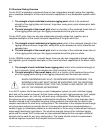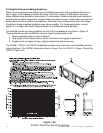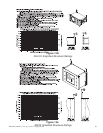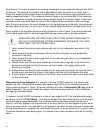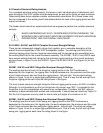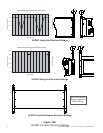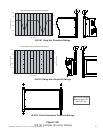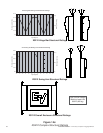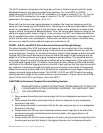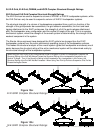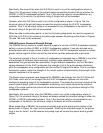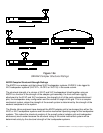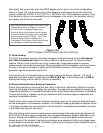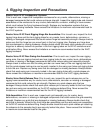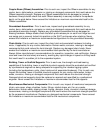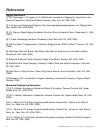
ELECTRO-VOICE
®
X-Line Very Compact
TM
Rigging Manual 44
The XLVC enclosures hinge about the hinge bar and have a limited range of vertical tilt angle
adjustment based on the swing-arm attachment positions. For the XLD281-to-XLD281
combination and the XLE181-to-XLE181 combination, the range is limited to 0° to -10°. For the
XS212-to-XS212 combination, the range is limited to 0° to -20°. For the XLD-281-to-XS212
combination, the range is limited to +4° to -10°.
When both the front and rear rigging hardware is installed, the hinge bar always prevents the
swing arm from having any kind of lateral force. The swing arm is always axially loaded, either in
tension or compression. The angle of that axial force, relative to the enclosure, is limited to the
range of vertical tilt adjustment described above. Thus, the front-to-back structural ratings for the
swing arm rigging points, shown in Figure 14, do not cover a full 360°, but instead are limited to
two arc segments that cover the possible range of vertical angle adjustment. (One segment is for
tension and the other is for compression.) It should also be noted from Figure 14 that the swing
arms are only rated for side-to-side pull angles of a maximum of ±5°.
XLD281, XLE181, and XS212 Overall Enclosure Structural-Strength Ratings
The actual strength of the XLVC enclosures will depend on the complex total of the combined
forces from each of the rigging points acting on the enclosure as a whole and will vary with the
array configuration. However, for the sake of simplicity, Electro-Voice chooses to define the work-
ing-load limit of the overall enclosures as the sum total of the weight of that enclosure plus the
weight of all of the enclosures and rigging hardware suspended below. This simplified working-
load weight rating of the overall enclosures is defined as being independent of the angles of pull
on the individual rigging points. The Electro-Voice engineers have chosen to define the working-
load limits of the individual rigging points as a function of pull angle so that they take into account
any variations in enclosure strength that might occur as a function of pull angle. This approach
allows the enclosure working-load limit to be defined as independent of pull angles, making the
complex structural rating analysis easier. The XLD281, XLE181 and XS212 each have unique
working-load-limit ratings for the overall enclosure, and are shown in Figure 14a for the XLD281,
Figure 14b for the XLE181 and Figure 14c for the XS212.
CAUTIONS for Enclosure Complex Structural Rating Analysis
WHEN APPLYING A COMPLEX STRUCTURAL RATING ANALYSIS TO ANY XLVC
LOUDSPEAKER SYSTEM SUSPENDED OVERHEAD, THE USER MUST OBEY
THE FOLLOWING RULES:
1. Never exceed the working-load-versus-angle limit for any loudspeaker enclosure in the
array.
2. Never exceed the side-to-side angle limits for the front hinge bar on any loudspeaker
enclosure in the array.
3. Never exceed the side-to-side angle limits for the rear swing arm bar on any loudspeaker
enclosure in the array.
4. Always make sure that two quick-release pins secure every hinge bar at the side of the
enclosures and grids and that those pins are fully locked in the rigging tubes on all
enclosures and grids.
5. Always make sure that the quick-release pins for every swing arm pass through the hole in
the swing arm and are fully locked in the rigging channels on all enclosures and grids.



